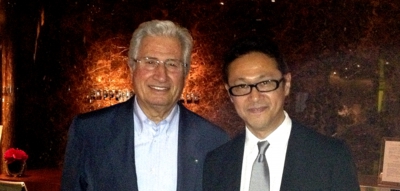Maestro Giugiaro has shown me the way to live.
I learned a lot from the genius Giugiaro. I was thrilled, admired, and impressed. And I would like to inherit the wonderful sense entrusted to cars and things as much as possible and pass it on to the next generation.
A talk show at the 2013 New Golf Tokyo Presentation, which I was the facilitator of. Maestro Giugiaro said.
"There are many traditionally beautiful things in Japan. Fashion, architecture, culture, lifestyle, these are welcomed from Europe with a longing. That's why Japanese Mr. Wada asked me what beauty is. It's confusing when asked. You may not understand it because the concept of beauty comes from the outside. I think beauty is in you. "
A gentle word that suggests the potential of beauty and the role of Japanese design while knowing the actual situation of Japanese car design. That was exactly the maximum word I had been waiting for.
A book I accidentally picked up when I started attending art school and didn't even understand the letter "D" in design. It was a design magazine called "Car Styling" and was a special issue of Giorgetto Giugiaro. The existence of a maestro who led me to the path of a car designer.
After that, I will meet Walter de Silva in Audi. His boss, sometimes a competitor, and sometimes like his father. Starting with the A6 (C6) wearing a single frame, he was also a comrade who co-created many cars such as the show car Pikes Peak Quattro, Q7, and A5.
At that event, God let them meet at the same time.
On the eve of the recital, there was a dinner party with these two people and several VW Japan executives. I brought the "Car Styling Giugiaro Special Issue" that I have been cherishing for 30 years. Giugiaro said, "Oh, nostalgic." While looking at the book, he said:
"I've done a lot of design so far. At one point, it became an egoistic. I've also designed many research cars (prototypes), but the most important thing is that the design is loved by people. To be a part of people's hearts and lives. "
There is a person I have long admired and respected in front of me, who speaks to me. I took every word carefully and decided to make it a treasure and devote myself to it.
Giugiaro also left these words for the young people who were gathering at the new golf recital venue and aiming to become designers in the future. I would like him to think about the management and design management of Japanese automobile companies.
"We are egoists. We always have the desire to make something different from people. But even if we make something that has a big visible change or impact, it won't last long. The design is It doesn't make sense if you don't love it carefully. "
The attitude of the genius, and the words, have always been very humble. If it weren't for him, I wouldn't be there now. Thank you, Maestro Giugiaro. Looking forward to seeing you again.
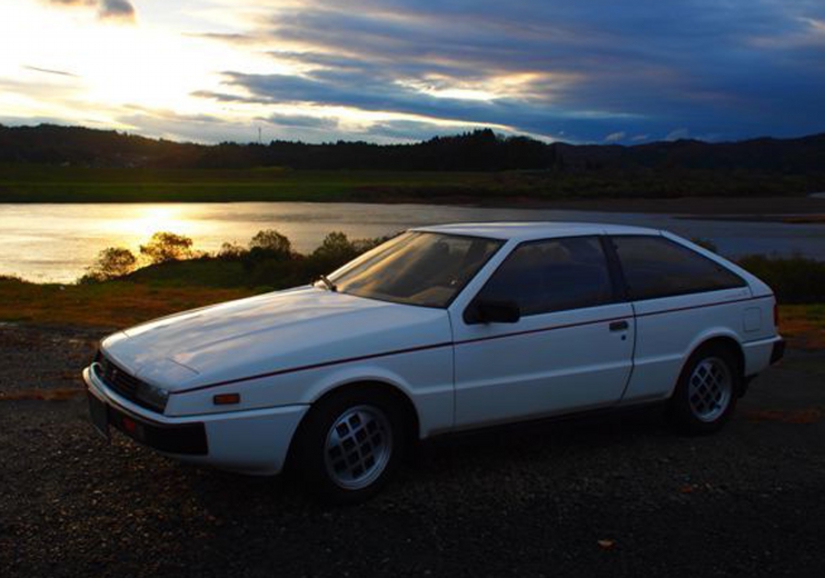
Isuzu Piazza's smile
Recently, I saw a shiny Isuzu Piazza in a parking lot in Tokyo. I think it was the first summer when I became a college student when I first saw the car. I still remember the crush I felt at that moment.
It was when CVCC, which I shared with my brother, and the used Honda Civic got sick, and went to Yanase to see the used GOLF. When I entered the Yanase showroom to see the new car, I was shocked. The car that was there was the Isuzu Piazza, which was just launched.
It is the work of Giorgetto Giugiaro, a genius car designer who created the opportunity for me to become a car designer. The strongest Isuzu model in history, developed in 1979 as a successor to the 117 Coupe (also Giugiaro's work). Isuzu of this era was making design golden time with Giugiaro.
The Piazza was produced as a model that inherited the design of the show car "Asso de Fiori", which appeared at the Geneva Motor Show in March 1973 as the ace of the car club. Giugiaro's work has always created an innovative movement in the car design world.
Aero body in the aerodynamic era. Giugiaro's design has a flash of surface to make the best use of its aerodynamic characteristics, and the plan view as an overall form is exquisite. Simply put, it provides a very round and comfortable wedge. At that time, it had a common design language for the Audi CD100, which brought a record number of cd 0.30.
Italdesign, led by Giugiaro, is said to have received project requests from most of the world's automakers during this period. The number of models that came out to the world is tremendous, but how many designs did you have, including the number of models that did not come out to the world? Actually, during the Nissan era, I myself met the maestro Giugiaro.
When I think about it now, it seems that Giugiaro ran alone and set the norm for many car designers in that era when it was called modern age.
He was the king of modern age design in pursuit of "newness". However, with the times, the pursuit of "newness" by designers has changed to the pursuit of "novelty". What exactly is the true "newness" of the coming era? In that sense, the current car design has not yet surpassed modern times. After all, the designers may have changed with the times, but the automobile companies may not have changed at all.
What is the future mission of car designers in an era where cooperation with nature and daily life is required?
Piazza seemed to smile while looking at the cars of this era in the corner of the parking lot.
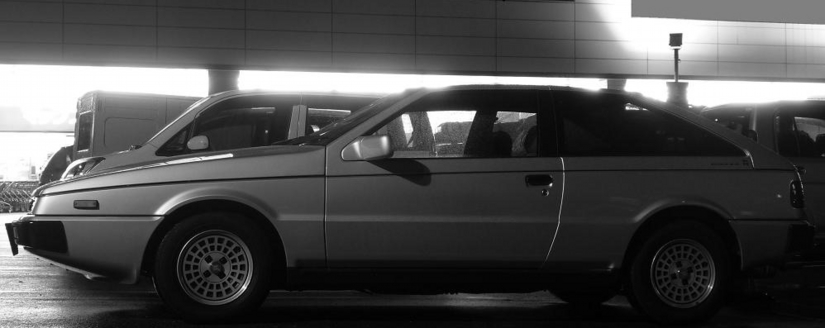
Isuzu Piazza (1981)
The relationship between Giugiaro and Isuzu began in 117 Coupe (1966) and produced many famous cars. A typical example is Piazza. It is developed based on the prototype car "Asso di Fiori" developed by Italdesign, which was announced at the 1979 Geneva show. The potential of Isuzu to tailor the design of Juziaro to production was wonderful. It is said that the design influenced the mass-market cars in the world after that.
A neat and beautiful silhouette. There was a bright future there. "True newness" is something that only a genius can create.
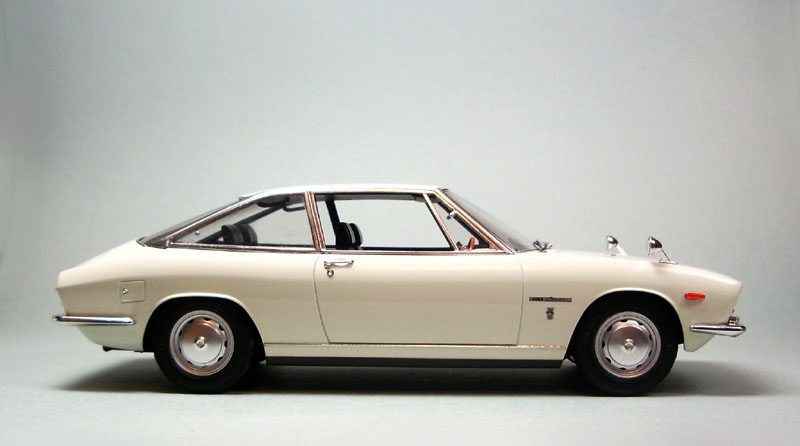
Isuzu 117 coupe (1968)
Carrozzeria Ghia, the work of Giugearo when he was the chief designer. It is a 4-seat coupe with a sleek design, and is one of the masterpieces of Japanese cars in the 1970s. The work of Giugearo of Modern Age is good, but his classic work has a unique emotional feeling. Anyway, it has a sense of proportion and a good balance. After the success of this project, he will create Italdesign with Japanese businessman Hideyuki Miyakawa and others. Mass production guidance became Italdesign's first job, and the earliest prototype, the Gear / Isuzu 117 Sport, was unveiled at the Geneva Motor Show in March 1966 and won the show's Concours d'Elegance. After that, it was exhibited at the International Automobile Design Biennale held in Italy and won the Honorary Grand Prize. (Some words from Wikipedia)
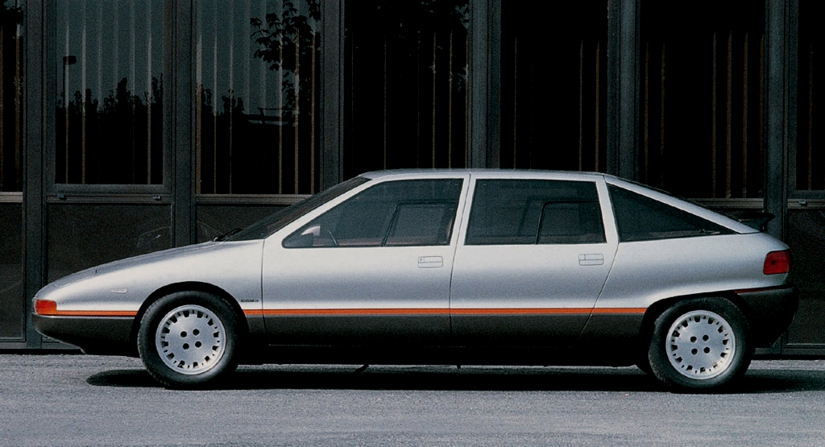
Lancia Medusa (1980)
The Medusa is a concept car announced at the 1980 Turin Motor Show by Italdesign, which pursues a low center of gravity, light weight, and comfort that suggests a different direction from "Panda" and "Mega Gamma." It has an organic body cross section to mean "Kurage" in Latin. As a young person, I was very fascinated by the design. Proposing a new era sedan image as a saloon. The long wheelbase, extremely long front overhang, and short rear overhang create beautiful proportions unique to Gugiaro.
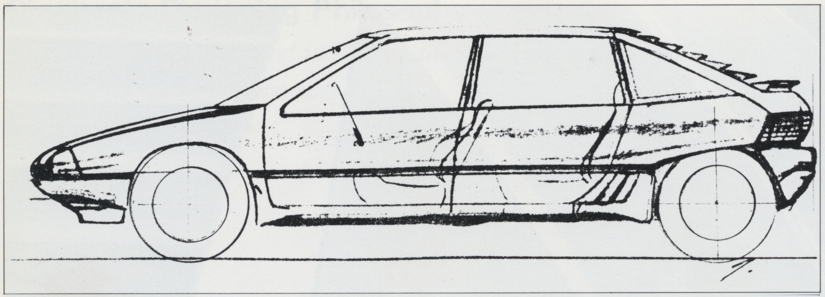
![]()
Lancia Megagamma (1978) & Alfa Romeo New York Tax Cab Concept (New York Art Museum (1976))
In the era of cars with a low center of gravity, Giugiaro proposed a concept with excellent aerodynamics, ease of getting on and off, and livability in the latter half of the 1970s. The model of the New York taxi cab, a prototype announced in 1976, became a participating concept work sponsored by the Museum of Modern Art, New York. The Mega Gamba will be produced later as the basic concept of the first Nissan Prairie. It's a very interesting story for those who know Japanese cars in the 1980s.
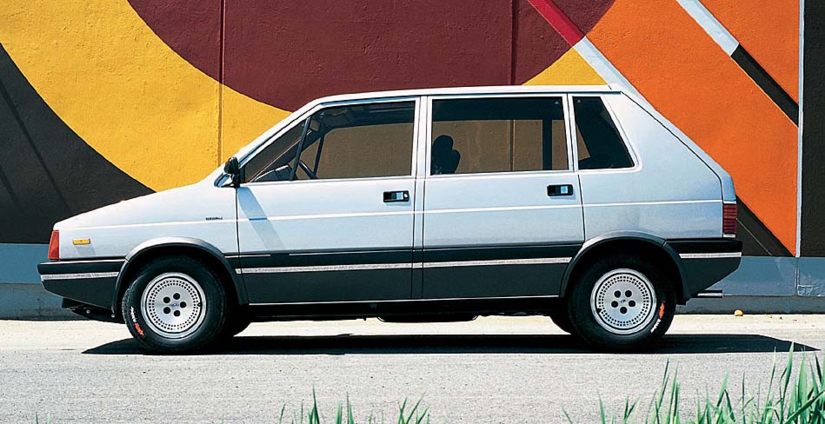
Lancia Megagamma(1978)
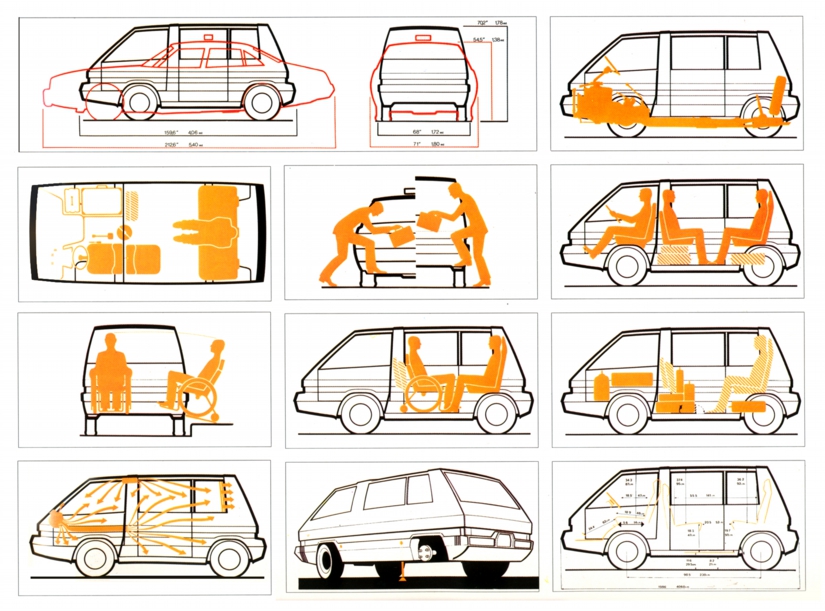
Alfa Romeo New York Cab Concept (1976)
Juziaro was a genius in product design of cars. Functional and rational design-building has set a new frontier in car design. Therefore, I think it set an example for designers who transcend genres.
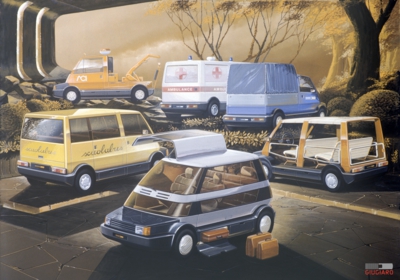
Italdesign CAPSURA Concept | Drawing (1982)
Rendering of Italdesign at the time. It was a drama, and it had a European world view different from Syd Mead.
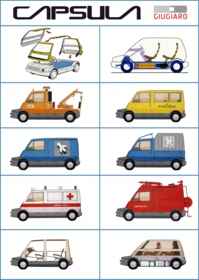
Italdesign CAPSURA Concept (1982)
Giugearo will be the only designer who has successfully combined car design and product design. I feel something magical that is functional, rational and convincing.
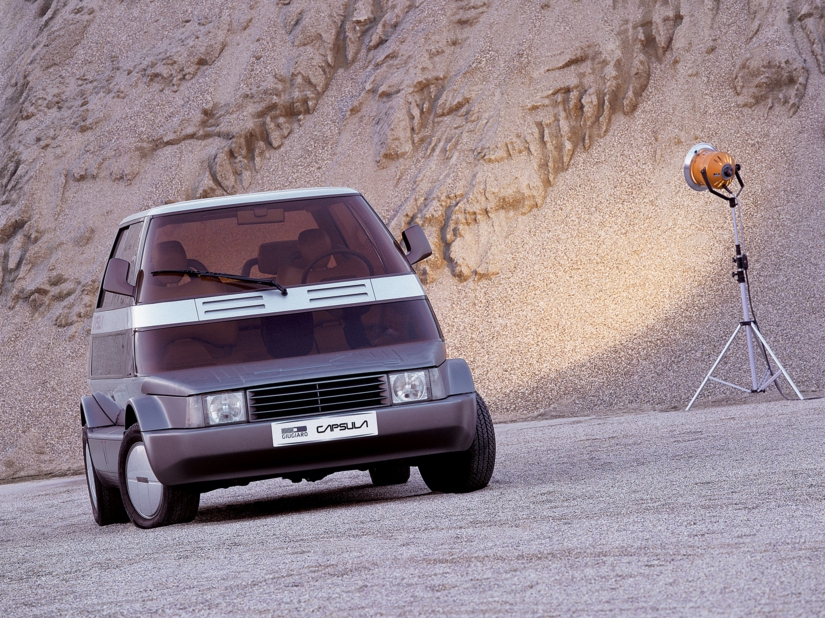
Italdesign CAPSURA Concept (1982)
A work by Juziaro when I was in the second year of art school. He taught me that the true meaning of design is the proposal from manufacturing that is not bound by styling. In the era of low center of gravity car styling at that time, he proposed many comfortable and easy-to-get-on cars. And it is also a novel and beautifully summarized rational design rich in intelligence. It may have been the beginning of this Japanese minivan era. Giugearo is a special designer who always makes special suggestions.
What car does Giugiaro pay the most respect to?
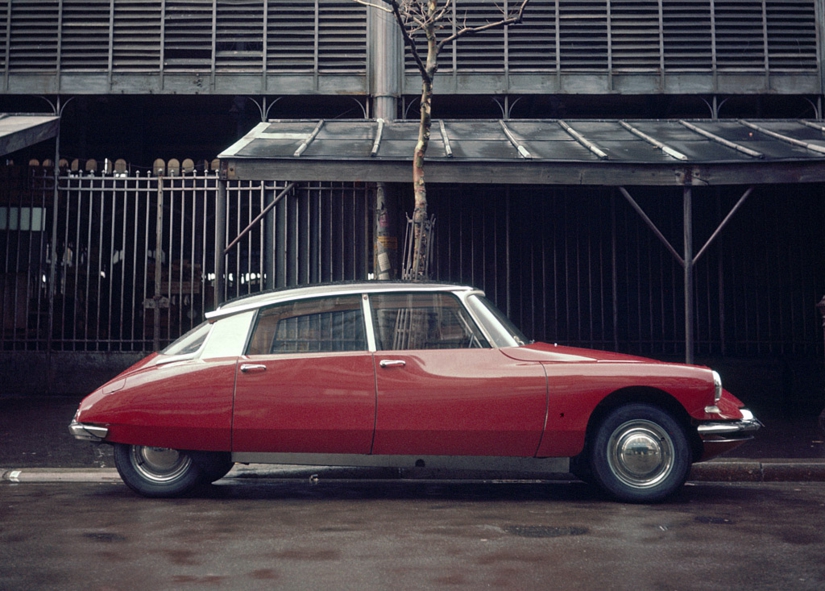
Citroen DS19 (1955) | A car that fascinated young masters | Citroen DS19
I once asked questions to Giugearo and VW Design Director Walter de Silva.
"What car have you been most influenced by?"
There was no prior meeting, and it was a sudden question.
However, the two returned the same answer without any hesitation.
"It's the Citroen DS19."
Actually, I knew that Walter liked this car from the time of Audi, but Giugiaro was surprised to agree.
A car that fascinates young masters and still retains its brilliance even after nearly 60 years. Juziaro The shock of 17 years old. Walter added, "This car is still my biggest research car." It's a very epoch-making car, but it's very architectural and its simplicity is very product design. That may be the point where the two masters pay homage.
The Citroen DS19 was unveiled at the 1955 Paris Salon.
The designer is Flaminio Bertoni, an Italian who is also a sculptor and also designed 2CV. The design of the DS, which was aerodynamically conscious and made heavy use of streamlines, was so far from other cars of the same era that it was praised as a "spaceship". The radiator grille has been eliminated, the headlights have been semi-embedded, and the front bumper has a large curve to create a low pointed nose, a sashless door without a window frame, and a rear wheel covered with a body.
Design requires innovation that opens up the era. However, today's fact that the true "newness" of the word innovation is completely different from the "newness" of the result of seeking superficial changes in the immediate future, which is often seen in car design in recent years. Designers have to be aware.
What is true "newness"? The hint is in this word of Walter.
"Design is a lot of training and scholarship, and true design is true courage. DS19 is still the subject of my research and the material of study."
While many cars are remodeled in just a few years and are forgotten in a blink of an eye, I would like to endure the "trials of time" and try to make cars that are loved by people for a long time.
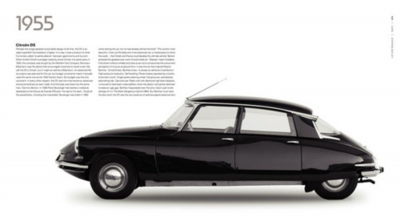
Citroen DS (1955)
For about 20 years from 1955 to 1975, it continued to be on the front line as a model that plays a key role in French cars, and while repeating improvements (including the derivative "ID" etc.), a total of about 1.455,000 Units (of which about 1.33 million were produced in France) were manufactured. (From Wikipedia)
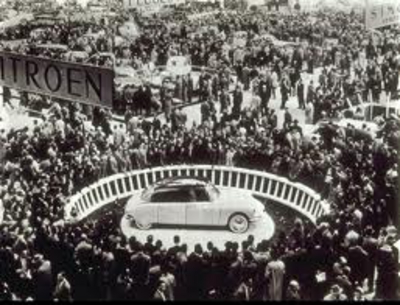
Citroen DS (1955)
The state of the Citroen booth at the Paris Salon at that time. It is full of people's enthusiasm. It was a UFO created by humans.
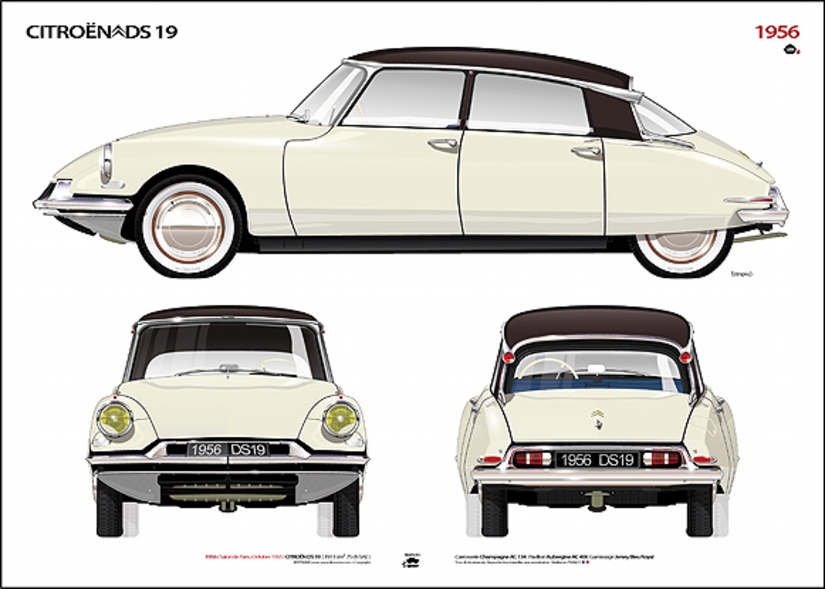
Citroen DS19 (1956)
The teardrop-shaped body form is thought to be aimed at the aerodynamic special products of the time. There are many problems from the aerodynamic concept of modern car design, but if you look closely at the long wheelbase, short overhang, etc., you can see that it has a common balance with the Medusa of Juziaro. The form that flows down from the front volume to the rear is more emotional than its functional consideration. We car designers are always looking for areas where function and beauty intersect.
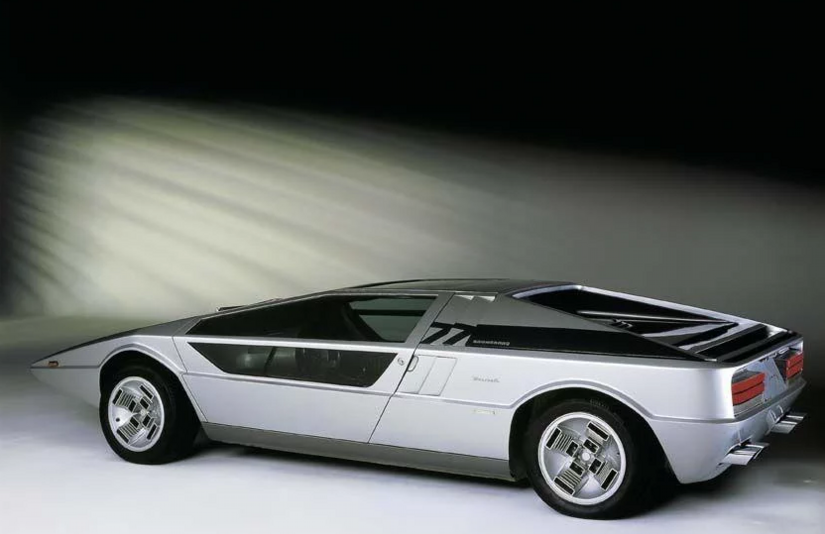
Maserati Boomerang concept model (1971)
Maserati Boomerang, a representative of Giugearo's 70's concept model. The straight and edgy design was predominant.
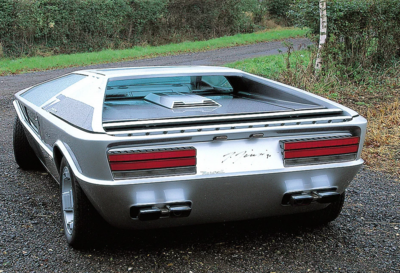
Maserati Boomerang (1971)
A 2-door coupe concept car announced at the Turin Auto Salon in 1971. Just two years ago, Kubrick's "2001: A Space Odyssey" was released. The future was exactly the era of the future.
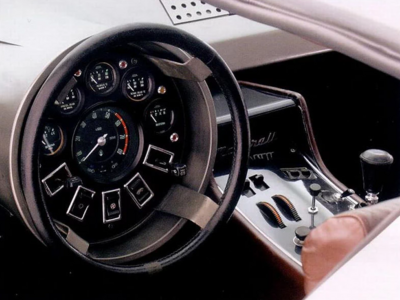
Maserati Boomerang / Interior design (1971)
This handle design is coming. In this era, the future was full of dreams.
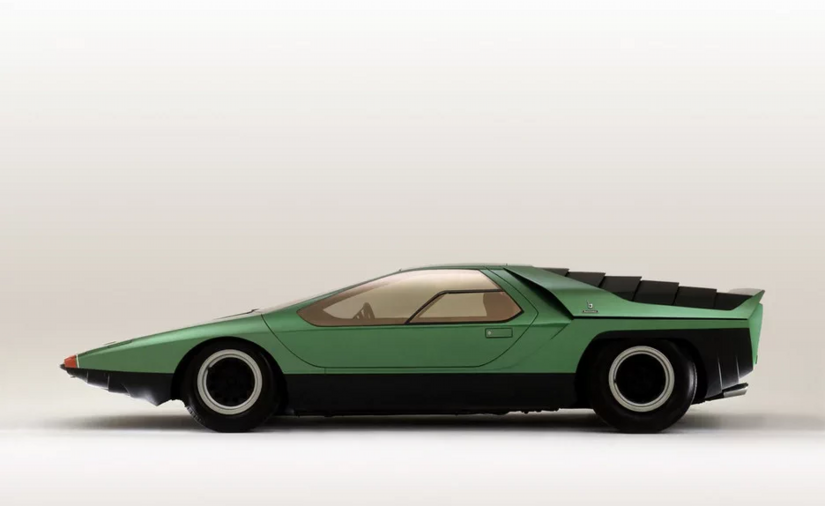
Alfa Romeo Carabo (1968)
The work of the genius Marcello Gandini, who conducted the Bertone design after Giugiaro left. It is said to have been the origin of all wedge-shaped supercars that prevailed in the 1970s, such as the Lotus Esprit, Lancia Stratos, Lamborghini Miura and Countach. Bertone's concept car exhibited at the 1968 Paris Salon. It makes its name in history as an epoch-making model that shows a new direction for supercar design. Only one was produced. It is thought that it had a great influence on the supercar after Giugiaro.
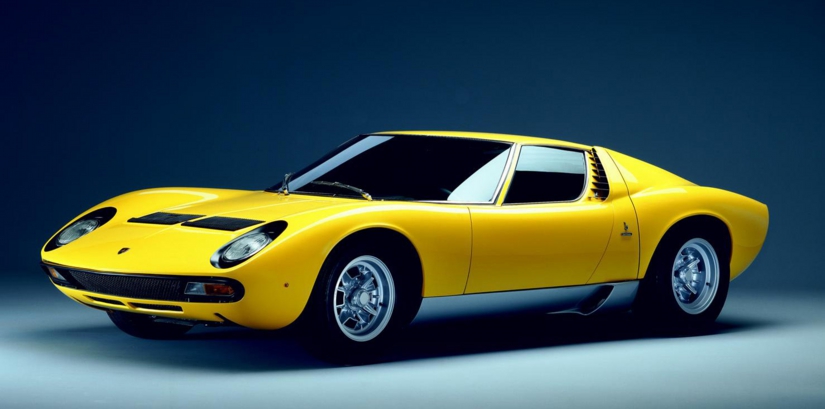
Lamborghini Miura (1966)
It was announced at the 1965 Turin Auto Show. Elegant styling by Marcello Gandini, who was just appointed to Bertone at the time. This successor will be a scenario called the Supercar Countach, also by Gandini. The beauty and the loveliness of this front can be said to be the perfect balance between modern and classic. It is a theme that can be seen in many current car designs. The achievements of Bertone, who created two genius car designers with Gandini and Gandini, are great. I think the 1960s was a time when the goodness of both craft and automation was well reflected in the design. There is a "humanity" that is being lost in this era.
Lamborghini Miura Concept (2011)
In 2006, the 40th anniversary of Miura, the 2006 Miura Concept was announced at the Detroit Show as a new Miura. The model, organized by Audi's boss Walter de Silva at the time, felt like Walter's love for Gandini. The model was taken from Lambo Studios to Audi Design Studio before the show for a presentation. I also participated. Walter clearly had respect for the original. The words of his presentation felt a love for Italy beyond the car. For Walter, Miura was his hometown of Italy.
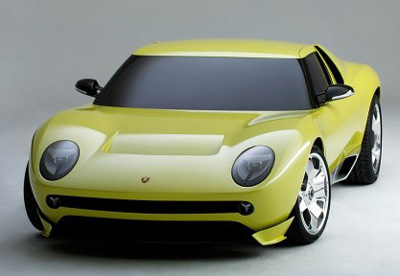
Lamborghini Miura Concept (2011)
In 2006, the 40th anniversary of Miura, the 2006 Miura Concept was announced at the Detroit Show as a new Miura. Walter's strong feelings were hidden in the model designed by the organization of Walter de Silva, who was Audi's boss at the time. The model was taken from Modena Lambo Studios to Audi Design Studio before the show for a presentation. I also participated. Walter clearly had respect for the original. And in the words of his presentation, he felt a love for Italy beyond the car. For Walter, I think Miura was his hometown of Italy.
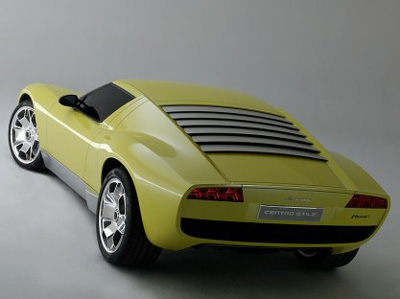
Lamborghini Miura Concept (2011)
That's why cars are love. If a car designer is different from other product designers, it may be the depth of love.
Do you design with love?
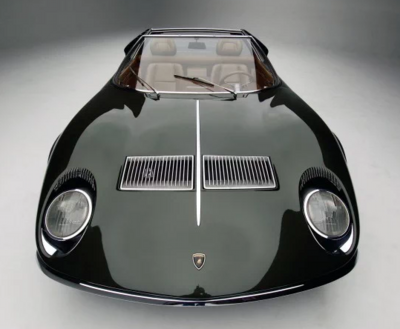
Lamborghini Miura (1966)
A lovely and unique eye design with eyelashes in an era without irregular lamps. A design with a human touch that is unmatched in the era of dignified costume design. There is a lot we have to learn.
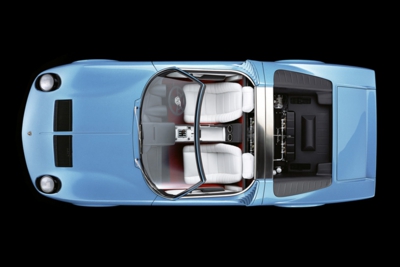
Lamborghini Miura (1966)
Miura open. Looking at the plan view, it can be seen that the method of constructing the plan for the front and rear designs is different.
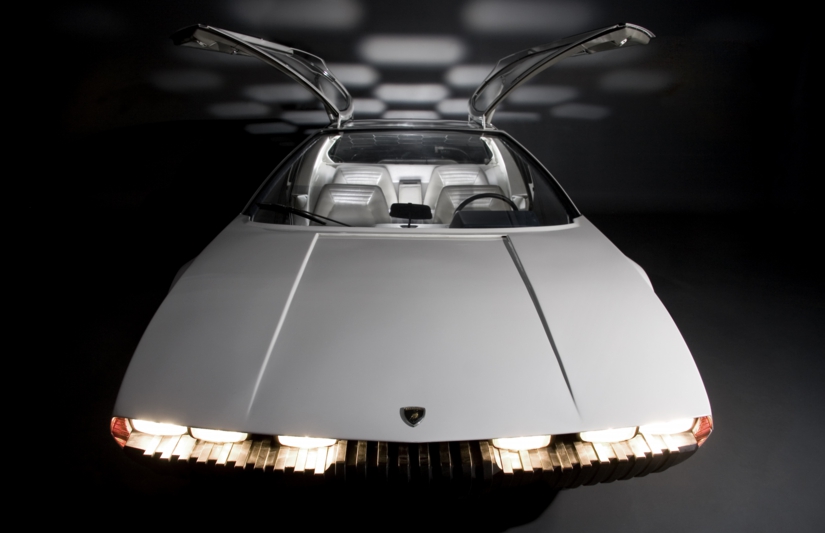
Lamborghini Marzal Concept of Bertone (1966) | Is future design comfortable?
1967 Italy. A supercar concept has emerged from Bertone in the heyday of Carrozzeria. Its name is Marzal. It's a little-known car, but it's also a work by Marcello Gandini.
The futuristic design of the time makes us feel the momentum to penetrate the modern age. There, you can feel a kind of "dignity" that looks at the future sincerely. The time when Gagarin said, "The earth was blue." The mood of the world where the Apollo program was implemented in 1969 is well communicated.
Was what Modern Age brought about at that time really good or bad? I'm skeptical now, but there was definitely a bright future there. Believing in the endless evolution of mankind, this Marzal must have been born.
Unquestioned ambition creates pure things.
With the arrival of the EV era, which will come in the near future, concept cars that give us a sense of a new future are being announced one after another. Even the prestigious German brands, who are headquartered in Germany, are screaming, "Don't miss the flow, hurry up" with a design that gives you a sense of the future. But am I the only one who feels that the future shape, future branding, and future business created in this way are somehow dirty?
The cars of the future, which were designed by force and are full of evil, which is the opposite of Pure.
When did the future become less bright?
Why do you feel comfortable in the old future?
"Only a genius can change the future." I thought about that while watching Marzal announced in 1967.
Courage to inherit
Do you design with love?
"We are egoists. We always have the desire to make something different from people."
However, even if you make something that has a big visible change or impact, it will not last long.
Design is meaningless unless it is loved carefully. "
By G. Giugiaro
